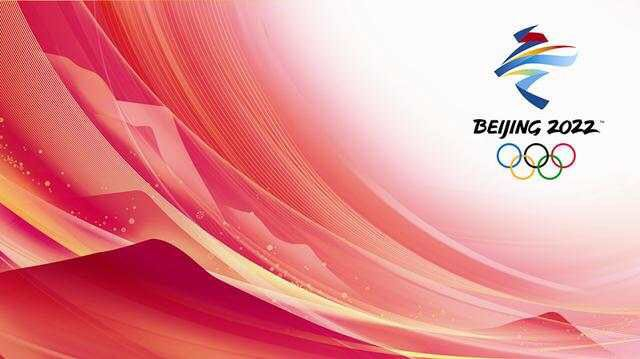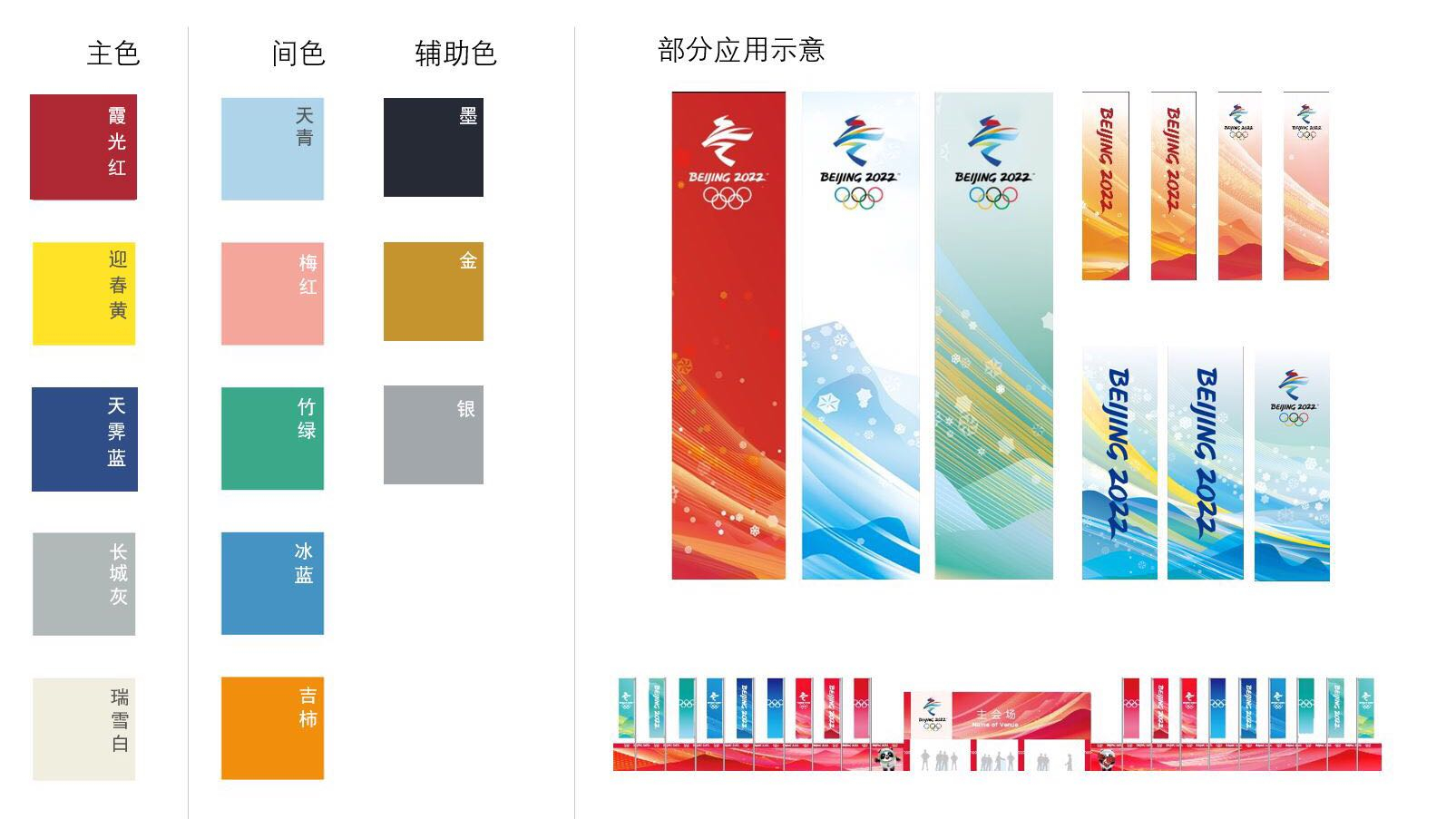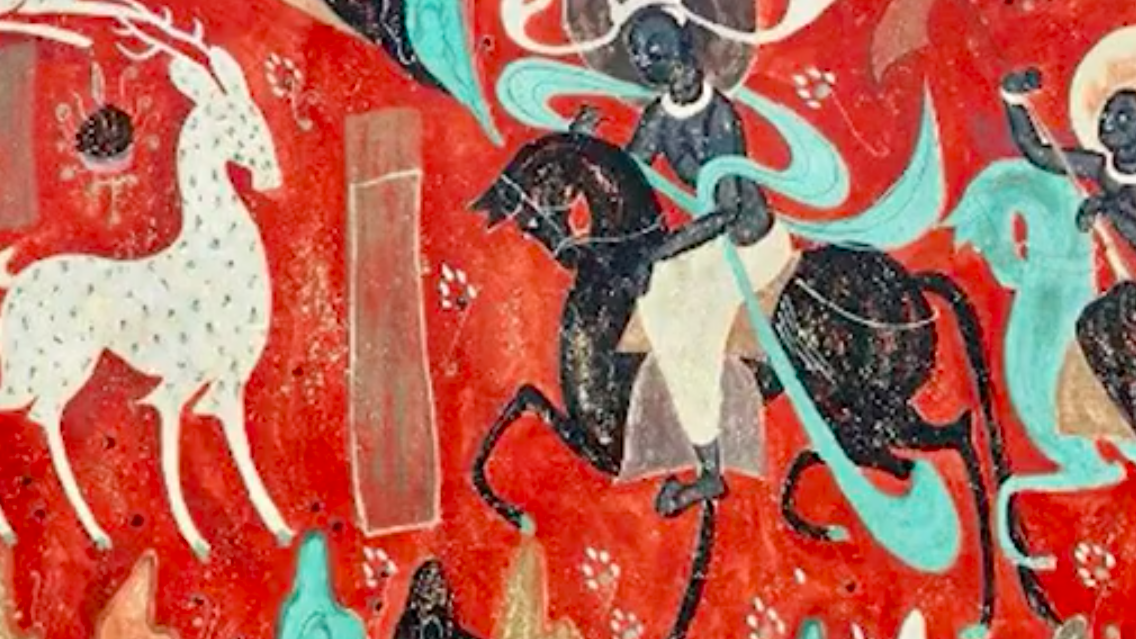
The color system and core graphics of the Beijing 2022 Winter Olympic and Paralympic Games were officially released on Friday. Noticeably, the core graphics are also the first dynamic graphics design in Olympic history.
Collectively referred to as the "Look of the Games", both the color system and dynamic graphics constitute, together with the emblem and mascots, the core elements of the Beijing Winter Olympics.
They tell everyone that "This is not something else. This is the Olympics," according to Lin Cunzhen, an expert from the Culture Department of the Beijing 2022 Organizing Committee.
All the Beijing Winter Olympics-related designs, including those of stadiums, uniforms, tickets, franchise products, celebration ceremonies, transportation, cultural activities as well as urban landscape, will follow the color system and core graphics.
In other words, they are the "face" of the 2022 Beijing Winter Olympics.
Color system draws inspiration from the color of traditional Chinese mineral pigments
Ever since the Athens 2004 Olympics, every Olympics has had a color system and core graphics to showcase its uniqueness. "The color used is different from one Olympics to another. And the difference can be huge because color can best represent the culture of their own ethnicity and area," said Lin.
Launching relevant design projects in 2018, the Beijing 2022 Organizing Committee designed the color system for the Beijing Games by going through the representative colors in Chinese history, summarizing Chinese color cultures as well as analyzing the urban colors of the three Games zones – Beijing, Yanqing and Zhangjiakou.

The Beijing 2022 Winter Olympic and Paralympic Games color system and application examples. /Beijing 2022 Organizing Committee
The Beijing 2022 Winter Olympic and Paralympic Games color system and application examples. /Beijing 2022 Organizing Committee
As it turns out, the 2022 Games' color system consists of three parts – main color, secondary color and auxiliary color.
All with an artist's name, the five main colors are glowing red, spring yellow, sapphire sky, Great Wall grey, and snow white.
The five secondary colors are sky blue, plum-blossom red, bamboo green, ice blue, and persimmon orange. The three auxiliary colors are Chinese ink, gold and silver.
"The public may not immediately find themselves familiar with these colors; however, in the eyes of specialists studying colors and know about Chinese colors, they will find that all of them come from the colors of Chinese traditional mineral pigments," said Lin.
From century-old cave paintings to Dunhuang Murals and glaze used to make ceramic products, Chinese traditional minerals pigments were widely applied to all kinds of artworks in different phases of Chinese history.
As one of the most primitive materials used in paintings, mineral pigments have a long history and stable physical properties that never fade.

The Beijing 2022 Winter Olympic and Paralympic Games color system draws inspiration from the color of traditional Chinese mineral pigments. /Beijing 2022 Organizing Committee
The Beijing 2022 Winter Olympic and Paralympic Games color system draws inspiration from the color of traditional Chinese mineral pigments. /Beijing 2022 Organizing Committee
When it comes to the choice of the colors, the Beijing 2022 Organizing Committee did research on the winter colors of the three games zones as well as the cultural colors of the Spring Festival. They also integrate their understandings of traditional Chinese culture as expressed in the four seasons of nature, the five directions of heaven and earth and the 24 solar terms.
Among the five main colors, glowing red is also used in the emblems of the Beijing 2022 Winter Olympic and Paralympic Games. The original meaning for glow is red cloud air. It stands for the sunshine spreading over the earth through layers of clouds as the sun rises.
Spring yellow is the color of the winter jasmines. Spring comes as the winter jasmines blossom. It represents liveliness and passion.
Sapphire sky derives from the color of blue glaze in Chinese traditional ceramic treasures. The main materials for blue glaze is a kind of blue glass from the Western region called smalt. Therefore, the blue glaze is ancient "Belt and Road."
Great Wall grey is the color of the bricks at the Great Wall, representing the solemnity of the history as well as a sense of determination. Great Wall grey is also one of the main colors for the Beijing 2008 Olympics, also expressing a cultural heritage of Beijing as the first-ever city to hold both the summer and the winter Olympic Games.
Lastly, snow white is the most beautiful color in winter. All things are more colorful with it as the backdrop. As an old Chinese saying goes, "A timely snow promises a good harvest." Snow represents people's best hope for the future.
First dynamic core graphics in Olympic history

The Beijing 2022 Winter Olympic and Paralympic Games core graphics. /Beijing 2022 Organizing Committee
The Beijing 2022 Winter Olympic and Paralympic Games core graphics. /Beijing 2022 Organizing Committee

The Beijing 2022 Winter Olympic and Paralympic Games core graphics. /Beijing 2022 Organizing Committee
The Beijing 2022 Winter Olympic and Paralympic Games core graphics. /Beijing 2022 Organizing Committee

The Beijing 2022 Winter Olympic and Paralympic Games core graphics. /Beijing 2022 Organizing Committee
The Beijing 2022 Winter Olympic and Paralympic Games core graphics. /Beijing 2022 Organizing Committee
The inspiration for the core graphics design of the Beijing 2022 Winter Olympic and Paralympic Games comes from the traditional Chinese idea of "Taoism is nature; heaven and man is one."
With the help of scientific and technological means, as well as computer-generated technology, the core graphics form a picturesque winter scenery that is full of geographic features as well as Chinese charms.
The mountainous landform of the two games zones, Yanqing and Zhangjiakou, is represented in the structure. The inspiration for the lines of movement is drawn from the dazzling artistry of winter sport athletes. The graphics also integrate the culture carried in the ancient art painting "A Thousand Li of Rivers and Mountains" as well as the charm of Chinese calligraphy,
At the same time, the flakes represent the participants expected at the Beijing 2022 Winter Olympic and Paralympic Games. The design expresses the idea of the harmonious coexistence of man and nature in the new era, and the construction of a community of a shared future for mankind.
It is the first time in the Olympic history that the core graphics will be a dynamic one. "What we are aiming for with the dynamism is not the concept of it. Rather, we want to expand its use," Lin explained.
"With the improvement in technologies, we have more ways of presenting such as TV broadcasts and short videos. People like this dynamism as it can bring more information. The dynamism will increase engagement. When people are watching the games or touring the whole stadium, they are not only watching, but participating."
(Cover image: Beijing 2022 Organizing Committee)